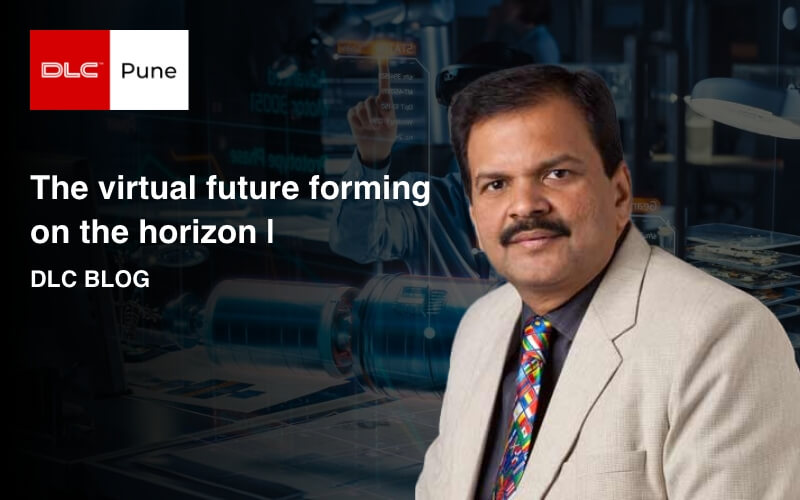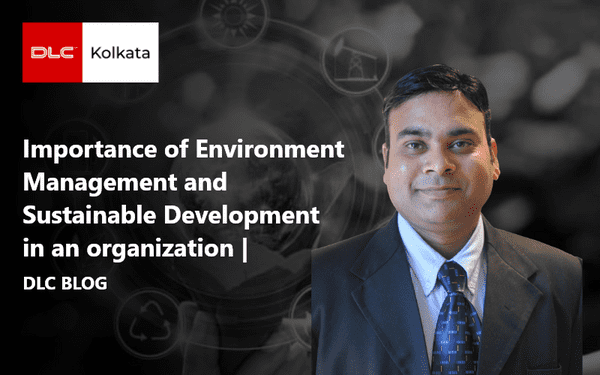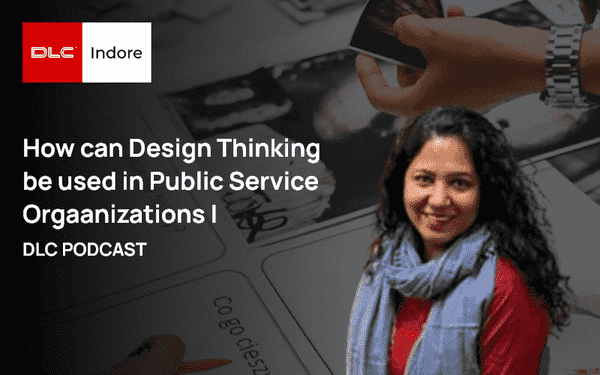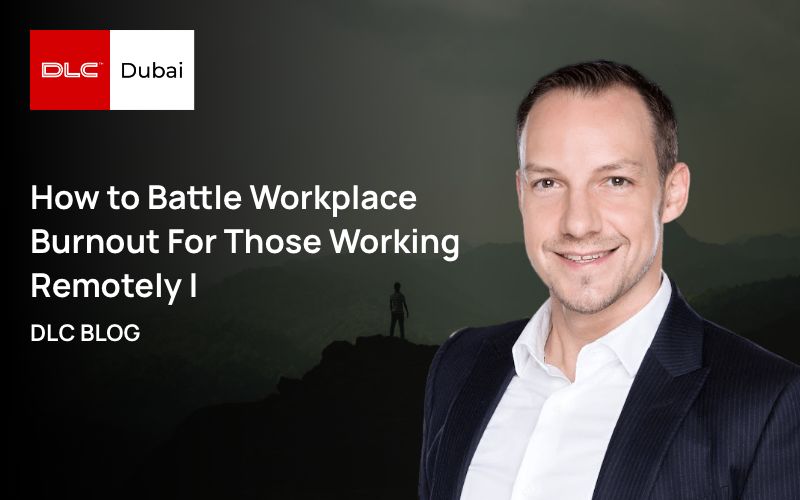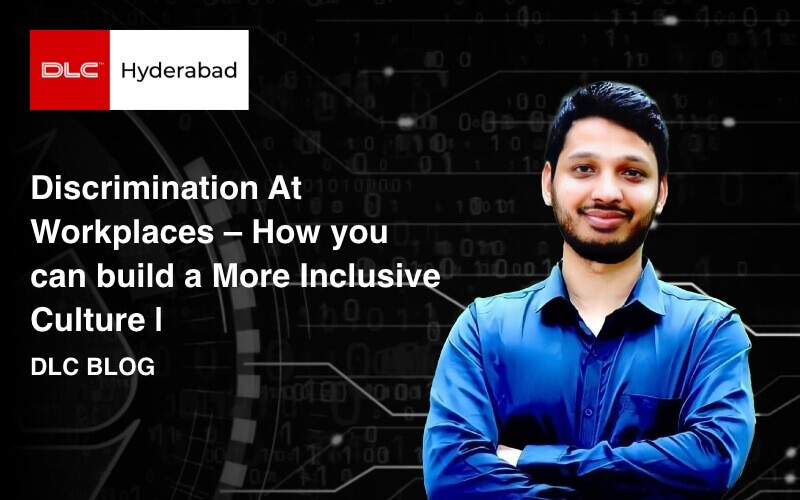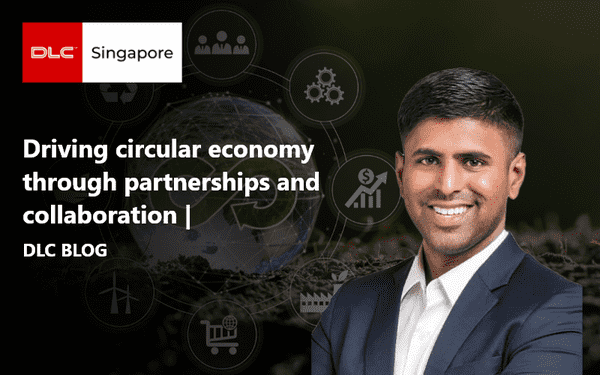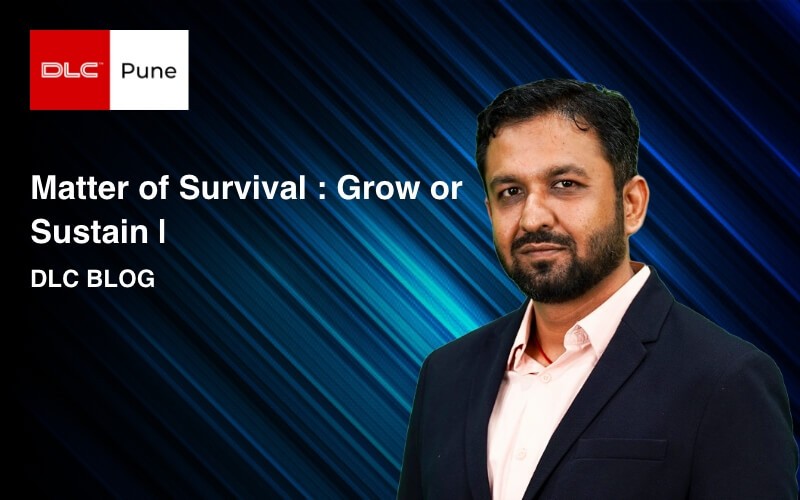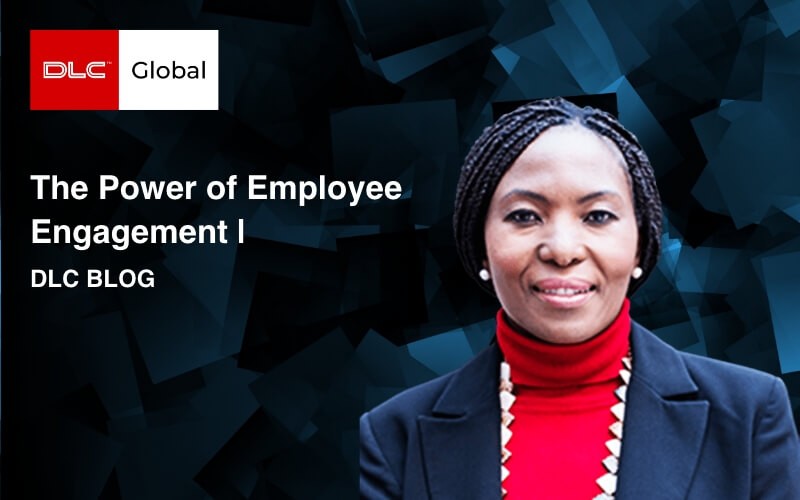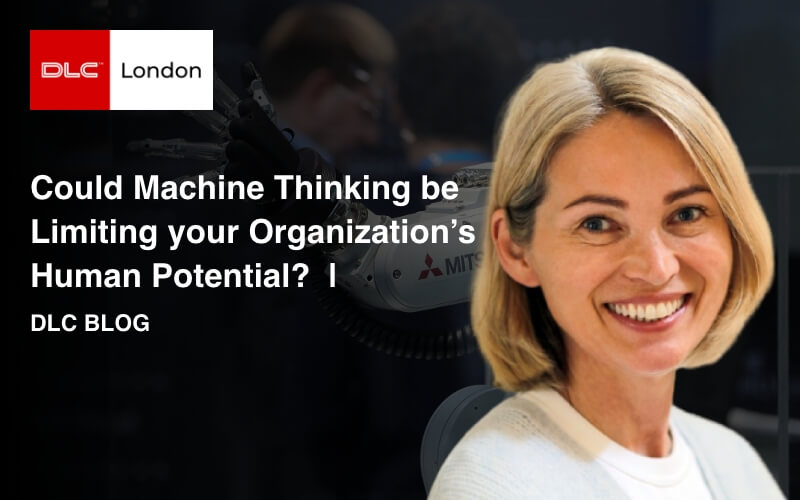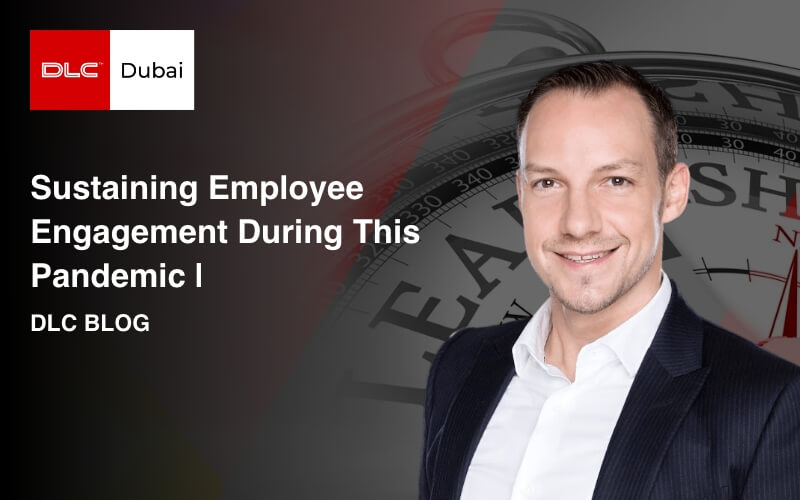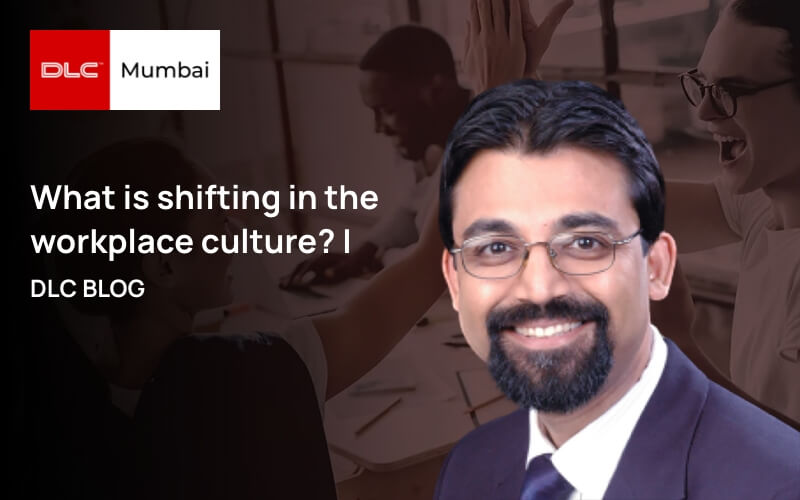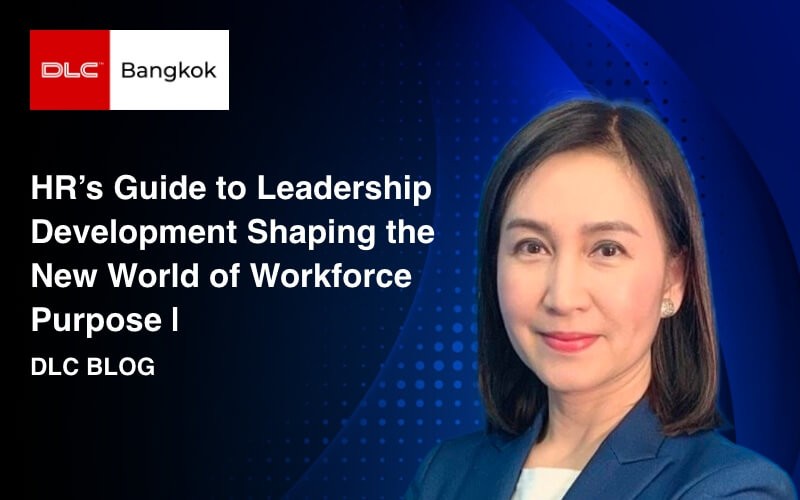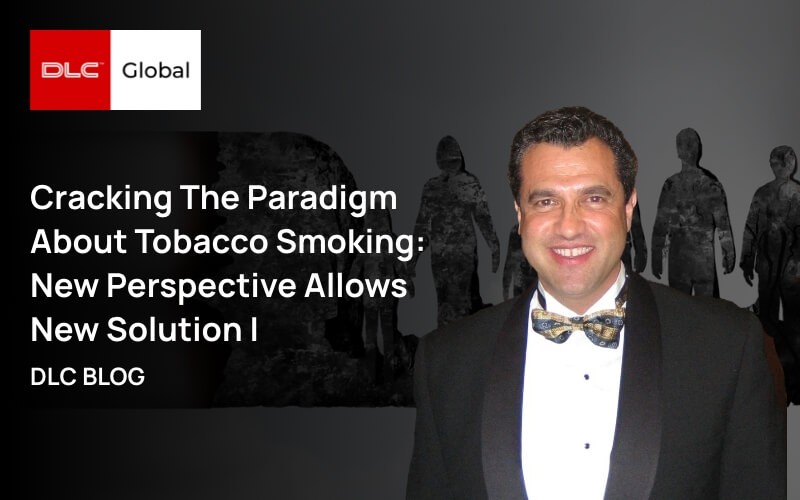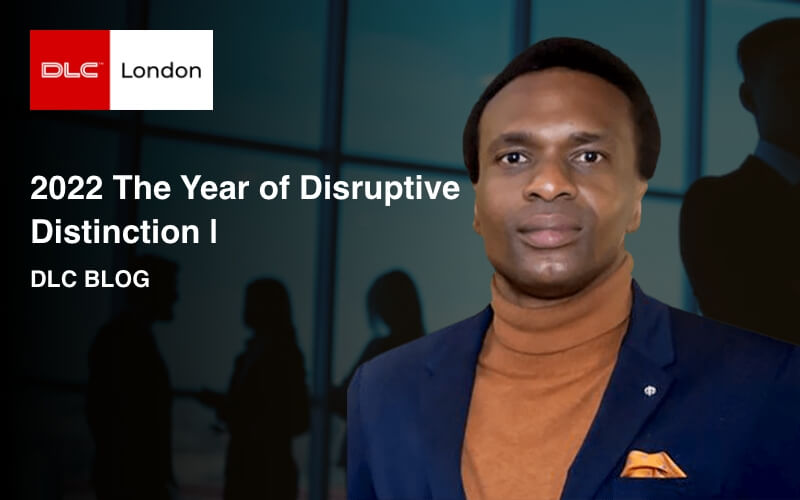
The 2- Dimensional employee:
Many young, new employees are leaving soon after joining. Often referred to as “infant mortality”, this number is going up. This is only a footnote in the published literature on “Great Resignation” or “Great Reset”.
“I know all the people who have joined in the last two years only in two-dimension, over video calls. How do leaders build trust with employees you have not met in person?” asked the CEO of a technology company.
And yet Leadership has never been more relevant.
Leadership effectiveness impacts retention and innovation both:
Research done by Great Place to Work® in India shows that employees in organizations in the top quartile in leadership effectiveness have more than 20 percent higher intent to stay. (88 percent employees saying they want to stay for a long time, as opposed to only 71 percent in the bottom quartile)
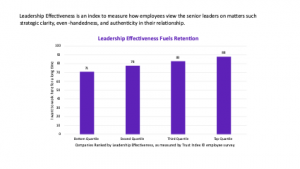 Again, in the top quartile companies, three times more employees experience consistent opportunities for innovation.
Again, in the top quartile companies, three times more employees experience consistent opportunities for innovation.
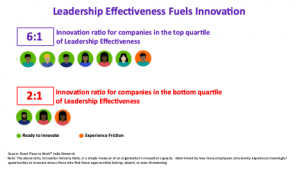 Competency Add – but culture fit is still relevant
Employees who believe that management hires people who fit in well into the culture are two times more likely to stay longer in the organization than those who do not. So, while you recruit new employees for their competencies, do not overlook culture fit.
Integrating new employees into the culture of the organization immediately upon joining is equally important.
Hybrid working has improved employee perceptions, not the other way round
Overall, employee perceptions have increased by 6 percent. This is not seen in “normal” years. What is more, areas like management’s reliability, equity, and impartiality – all difficult areas to score high on an employee survey- have gone up by more than 6 percent.
Does this mean that lack of coffee cooler conversations to discuss your boss, promotion received by someone else, or performance appraisal ratings led to an improvement in employee perceptions on lack of favoritism and politicking?
Do not discount the fact that communication has improved during Hybrid working and not deteriorated due to hybrid working. Does this partially explain why scores have gone up in the difficult areas?
Competency Add – but culture fit is still relevant
Employees who believe that management hires people who fit in well into the culture are two times more likely to stay longer in the organization than those who do not. So, while you recruit new employees for their competencies, do not overlook culture fit.
Integrating new employees into the culture of the organization immediately upon joining is equally important.
Hybrid working has improved employee perceptions, not the other way round
Overall, employee perceptions have increased by 6 percent. This is not seen in “normal” years. What is more, areas like management’s reliability, equity, and impartiality – all difficult areas to score high on an employee survey- have gone up by more than 6 percent.
Does this mean that lack of coffee cooler conversations to discuss your boss, promotion received by someone else, or performance appraisal ratings led to an improvement in employee perceptions on lack of favoritism and politicking?
Do not discount the fact that communication has improved during Hybrid working and not deteriorated due to hybrid working. Does this partially explain why scores have gone up in the difficult areas?
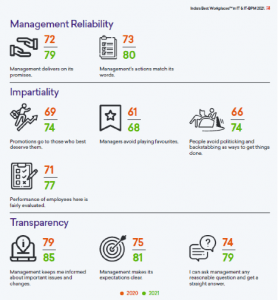 The above contradicts the belief that being together in the same office enables higher employee engagement. This would also mean that gig workers in the future who have very limited interaction with most other employees of an organization need not have lower engagement.
Perhaps, the reason why issues related to reliability, equity, and impartiality are no longer such low-scoring areas is that something else is now more important for employees.
Care, Support, and Workplace Experience are now the key differentiators between the best workplaces and the rest
The above contradicts the belief that being together in the same office enables higher employee engagement. This would also mean that gig workers in the future who have very limited interaction with most other employees of an organization need not have lower engagement.
Perhaps, the reason why issues related to reliability, equity, and impartiality are no longer such low-scoring areas is that something else is now more important for employees.
Care, Support, and Workplace Experience are now the key differentiators between the best workplaces and the rest
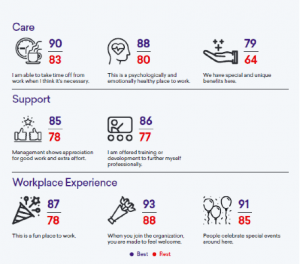 Workplace experience is not about a place anymore, yet it has got better.
In an industry where the bulk of the people are either working from home or are hybrid workers, why are more employees saying it is a fun place to work and people celebrate special events?
The answer lies in what these organizations are doing. To know these answers please wait for the annual research report of Great Place to Work® which will come out in June 2022.
Workplace experience is not about a place anymore, yet it has got better.
In an industry where the bulk of the people are either working from home or are hybrid workers, why are more employees saying it is a fun place to work and people celebrate special events?
The answer lies in what these organizations are doing. To know these answers please wait for the annual research report of Great Place to Work® which will come out in June 2022.
 Again, in the top quartile companies, three times more employees experience consistent opportunities for innovation.
Again, in the top quartile companies, three times more employees experience consistent opportunities for innovation.
 Competency Add – but culture fit is still relevant
Employees who believe that management hires people who fit in well into the culture are two times more likely to stay longer in the organization than those who do not. So, while you recruit new employees for their competencies, do not overlook culture fit.
Integrating new employees into the culture of the organization immediately upon joining is equally important.
Hybrid working has improved employee perceptions, not the other way round
Overall, employee perceptions have increased by 6 percent. This is not seen in “normal” years. What is more, areas like management’s reliability, equity, and impartiality – all difficult areas to score high on an employee survey- have gone up by more than 6 percent.
Does this mean that lack of coffee cooler conversations to discuss your boss, promotion received by someone else, or performance appraisal ratings led to an improvement in employee perceptions on lack of favoritism and politicking?
Do not discount the fact that communication has improved during Hybrid working and not deteriorated due to hybrid working. Does this partially explain why scores have gone up in the difficult areas?
Competency Add – but culture fit is still relevant
Employees who believe that management hires people who fit in well into the culture are two times more likely to stay longer in the organization than those who do not. So, while you recruit new employees for their competencies, do not overlook culture fit.
Integrating new employees into the culture of the organization immediately upon joining is equally important.
Hybrid working has improved employee perceptions, not the other way round
Overall, employee perceptions have increased by 6 percent. This is not seen in “normal” years. What is more, areas like management’s reliability, equity, and impartiality – all difficult areas to score high on an employee survey- have gone up by more than 6 percent.
Does this mean that lack of coffee cooler conversations to discuss your boss, promotion received by someone else, or performance appraisal ratings led to an improvement in employee perceptions on lack of favoritism and politicking?
Do not discount the fact that communication has improved during Hybrid working and not deteriorated due to hybrid working. Does this partially explain why scores have gone up in the difficult areas?
 The above contradicts the belief that being together in the same office enables higher employee engagement. This would also mean that gig workers in the future who have very limited interaction with most other employees of an organization need not have lower engagement.
Perhaps, the reason why issues related to reliability, equity, and impartiality are no longer such low-scoring areas is that something else is now more important for employees.
Care, Support, and Workplace Experience are now the key differentiators between the best workplaces and the rest
The above contradicts the belief that being together in the same office enables higher employee engagement. This would also mean that gig workers in the future who have very limited interaction with most other employees of an organization need not have lower engagement.
Perhaps, the reason why issues related to reliability, equity, and impartiality are no longer such low-scoring areas is that something else is now more important for employees.
Care, Support, and Workplace Experience are now the key differentiators between the best workplaces and the rest
 Workplace experience is not about a place anymore, yet it has got better.
In an industry where the bulk of the people are either working from home or are hybrid workers, why are more employees saying it is a fun place to work and people celebrate special events?
The answer lies in what these organizations are doing. To know these answers please wait for the annual research report of Great Place to Work® which will come out in June 2022.
Workplace experience is not about a place anymore, yet it has got better.
In an industry where the bulk of the people are either working from home or are hybrid workers, why are more employees saying it is a fun place to work and people celebrate special events?
The answer lies in what these organizations are doing. To know these answers please wait for the annual research report of Great Place to Work® which will come out in June 2022.
Prasenjit Bhattacharya
Co-Founder, Director & CEO
Great Place to Work Institute (India), Great Manager Institute (GMI)
Happiness Committee
Mumbai Chapter
Prasenjit established GPTW as the Gold Standard in workplace culture assessment with over 1000 organizations assessing their workplace culture every year in India alone.GPTW Institute is the world’s leading institute doing research in creating great workplaces.A TISS alumnus,he has over 2 decades of experience working with HSBC, Grow Talent, Eicher Consultancy Services, Siemens and Crompton Greaves.
Want to connect ?


















